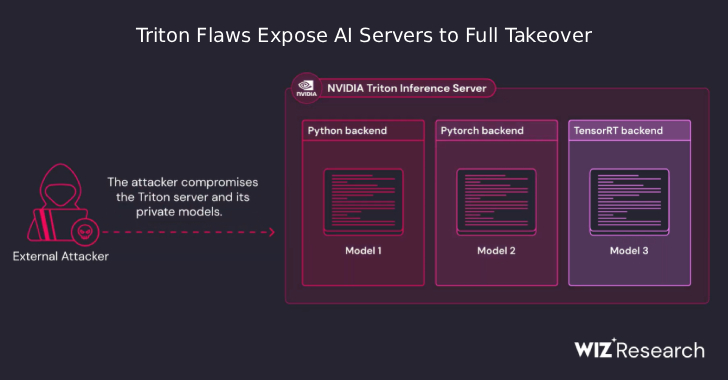
Why a Disaster Recovery Program is Important
In an increasingly interconnected and technology-dependent world, the potential for disasters, both natural and man-made, looms larger than ever before. From hurricanes and earthquakes to cyberattacks and data breaches, organizations of all sizes face a wide range of threats that can disrupt their operations and jeopardize their future. To navigate these turbulent waters and ensure business continuity, a robust Disaster Recovery Program is essential. In this article, we will explore why a disaster recovery program is crucial for organizations in today’s complex landscape.
The Inevitability of Disasters
One of the fundamental reasons why a disaster recovery program is important is the inevitability of disasters. Whether it’s a flood sweeping through a coastal city, a fire ravaging a forest, or a cybercriminal infiltrating a company’s network, disasters are an unfortunate part of life. While we can’t always predict when or how disasters will strike, we can prepare for them.
Natural disasters, in particular, are becoming more frequent and severe due to climate change. According to the National Oceanic and Atmospheric Administration (NOAA), the United States experienced 22 weather and climate disasters in 2020, each causing at least $1 billion in damages. These disasters included hurricanes, wildfires, and severe storms. Similarly, cyberattacks have been on the rise, with criminals targeting organizations of all sizes. The 2021 Colonial Pipeline ransomware attack is a stark reminder of the vulnerability of critical infrastructure.
Given the inevitability of disasters, organizations must adopt proactive measures to mitigate their impact and ensure they can recover swiftly. This is where a well-designed disaster recovery program comes into play.
Minimizing Downtime
One of the primary objectives of a disaster recovery program is to minimize downtime. Downtime can be incredibly costly for businesses, affecting their revenue, reputation, and customer trust. When systems go down, employees can’t work, customers can’t access services, and essential operations grind to a halt.
Consider a scenario where a financial institution experiences a cyberattack that takes its online banking system offline. If the institution doesn’t have a disaster recovery plan in place, it might take days or even weeks to restore services fully. During this time, customers may lose confidence in the institution, leading to a loss of business and reputation damage.
A disaster recovery program ensures that organizations can recover their critical systems and data quickly, reducing downtime to a minimum. This involves regular data backups, redundancy, and well-defined processes for restoring operations. By doing so, businesses can continue to serve their customers and clients even in the face of adversity.
Protecting Data and Intellectual Property
In today’s digital age, data is often considered one of an organization’s most valuable assets. Protecting sensitive information, intellectual property, and customer data is not only a legal and ethical obligation but also a business imperative. Disasters, whether they are natural or cyber-related, can put this data at risk.
Data breaches, for example, can result in the exposure of customer information, financial records, and proprietary research. The consequences can include financial penalties, legal action, and a tarnished reputation. Therefore, a disaster recovery program should include robust data protection measures, including encryption, access controls, and secure offsite backups.
Natural disasters can also pose a significant threat to data. Floods, fires, and earthquakes can destroy physical infrastructure, including servers and data centers. Without proper disaster recovery planning, organizations risk losing critical data forever. Cloud-based backups and geographically distributed data centers can play a crucial role in safeguarding data against such physical disasters.
Regulatory Compliance and Legal Obligations
In many industries, regulatory compliance is a non-negotiable requirement. Organizations must adhere to specific rules and standards related to data security, privacy, and business continuity. Failure to comply with these regulations can result in hefty fines and legal consequences.
A disaster recovery program can help organizations meet their regulatory obligations. By implementing robust data protection and recovery procedures, businesses can demonstrate their commitment to safeguarding sensitive information. This not only helps them avoid legal trouble but also builds trust with customers and partners who expect their data to be handled responsibly.
Maintaining Business Reputation
Reputation is a fragile asset, and it can take years to build but only moments to shatter. Disasters, whether they are natural or caused by human error, can have a profound impact on an organization’s reputation. Customers and stakeholders expect companies to be resilient and capable of handling challenges.
Consider the case of a retail company that experiences a significant data breach, resulting in the compromise of customer credit card information. If the company is unable to respond swiftly and effectively, it may face a public relations nightmare. Negative headlines, social media outrage, and customer backlash can damage the brand irreparably.
A disaster recovery program that includes a communication plan can help organizations manage their reputation during a crisis. It enables them to communicate transparently with stakeholders, acknowledging the issue, outlining the steps being taken to address it, and reassuring customers that their concerns are being addressed. Such proactive communication can go a long way in preserving trust and mitigating reputational damage.
Cost Savings in the Long Run
While implementing a disaster recovery program involves an initial investment in terms of technology, infrastructure, and planning, it can result in significant cost savings in the long run. Disasters are expensive. The cost of downtime, data loss, and recovery efforts can be astronomical.
Having a disaster recovery program in place can reduce these costs by ensuring that recovery processes are efficient and effective. It also minimizes the risk of extended downtime, which can be financially crippling. Insurance premiums may also be lower for organizations that can demonstrate robust disaster recovery measures.
Furthermore, the cost of non-compliance with regulations can far exceed the cost of implementing a disaster recovery program. Fines, legal fees, and damage to reputation can be financially devastating.
Building Resilience for the Future
A disaster recovery program is not just about surviving disasters; it’s also about building resilience for the future. When organizations invest in disaster recovery planning, they are essentially future-proofing their operations. They become better equipped to handle unforeseen challenges and disruptions.
This resilience can be a competitive advantage. Organizations that can recover quickly from disasters can gain a significant edge in the marketplace. Customers and partners are more likely to trust and do business with companies that have a track record of resilience and preparedness.
Conclusion
In today’s unpredictable world, the importance of a disaster recovery program cannot be overstated. Disasters, whether they are natural or human-induced, are an unfortunate reality. They can disrupt operations, jeopardize data, and damage an organization’s reputation. By implementing a robust disaster recovery program, businesses can minimize downtime, protect their data, meet regulatory obligations, and safeguard their reputation.
Moreover, a well-prepared organization is not just surviving disasters; it is building resilience for the future. It is positioning itself to thrive in an increasingly complex and challenging environment. While the upfront investment in disaster recovery planning may seem significant, it pales in comparison to the potential costs of inaction. In the face of disasters, the organizations that have a plan in place will emerge stronger, more reliable, and better equipped to face whatever challenges the future may hold.
Contact Cyber Defense Advisors to learn more about our Disaster Recovery Program solutions.





